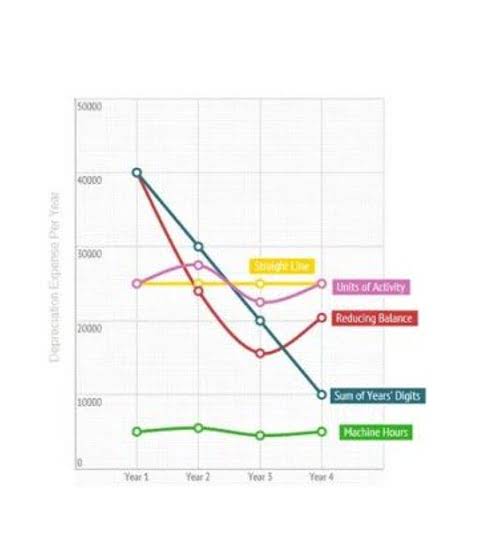
Remember to do your due diligence and understand the risks involved when investing. Ensure your investment aligns with your company’s long-term goals and core values. You can use this figure to help assess the success or failure of prior business decisions and inform plans. It’s also a key component in calculating a company’s book value, which many use to compare the market value of a company to its book value. That said, calculating your retained earnings is a vital part of recognizing issues like that so you can rectify them. Remember to interpret retained earnings in the context of your business realities (i.e. seasonality), and you’ll be in good shape to improve earnings and grow your business.

But, more than this, those who want to invest in your business will expect you to understand its importance because they’re investing not only in your business but also in you. This helps investors in particular get a snapshot view of the profitability of your business. But it’s considered a very good general indicator of business health and is definitely something investors look at. If your business is small or young, it might seem that using retained earnings in this way makes complete sense – and you’d be right.
Presentation of Retained Earnings
For smaller companies, this may be as easy as calculating the number of products sold by the sales price. For larger, more complex companies, this will be all units sold across all product lines. The retained earnings amount can also be used for share repurchase to improve the value of your company stock. The decision to retain the earnings or to distribute them among shareholders is usually left to the company management. However, it can be challenged by the shareholders through a majority vote because they are the real owners of the company.
If a company decides not to pay dividends, and instead keeps all of its profits for internal use, then the retained earnings balance increases by the full amount of net income, also called net profit. The first figure in the retained earnings calculation is the retained earnings from the previous year. Retained earnings differ from revenue because they are reported on different financial statements.
How comfortable are you with investing?
Below is a short video explanation to help you understand the importance of retained earnings from an accounting perspective. Retained earnings can do more than provide financial insight; they can help you grow your business and enjoy more success, as well. The articles and research support materials available on this site are educational and are not intended to be investment or tax advice. All such information is provided solely for convenience purposes only and all users thereof should be guided accordingly.
- Paid-in capital comprises amounts contributed by shareholders during an equity-raising event.
- Changes arising out of nonoperational activities such as gains and losses on disposal of assets are not considered either revenues or expenses.
- You calculate this number by subtracting a company’s total liabilities from its total assets.
- However, after the stock dividend, the market value per share reduces to $18.18 ($2Million/110,000).
- A company with a high level of retained earnings indicates that it has been able to generate consistent profits, which can be used for reinvestment in the business or to fund future growth opportunities.
- Retained earnings (RE) are created as stockholder claims against the corporation owing to the fact that it has achieved profits.
After the accounting period ends, the company’s board of directors decides to pay out $20,000 in dividends to shareholders. Typically, portions of the profits are distributed to shareholders in the form of dividends. Savvy investors should look closely at how a company puts retained capital to use and generates a return on it. One piece of financial data that can be gleaned from the statement of retained earnings is the retention ratio. The retention ratio (or plowback ratio) is the proportion of earnings kept back in the business as retained earnings. The retention ratio refers to the percentage of net income that is retained to grow the business, rather than being paid out as dividends.
What is retained earnings? – Retained earnings definition
Corporations with net accumulated losses may refer to negative shareholders’ equity as positive shareholders’ deficit. A report of the movements in retained earnings are presented along with other comprehensive income and changes in share capital in the statement of changes in equity. In the final part of the roll-forward schedule, the issuance of dividends to equity shareholders is subtracted to arrive at the current period’s retained earnings balance, i.e. the end of the period. Retained earnings reflect the amount of net income a business has left over after dividends have been paid to shareholders. Anything that affects net income, such as operating expenses, depreciation, and cost of goods sold, will affect the statement of retained earnings.
Below is the balance sheet for Bank of America Corporation (BAC) for the fiscal year ending in 2020. The examples in this article should help you better understand how retained earnings works and what factors can influence it. Keep researching to deepen your understanding of retained earnings and position yourself for long-term success. The significance of this number lies in the fact that it dictates how much money a company can reinvest into its business.
Losses to the Company
It’s also possible to create a retained earnings statement, alongside your regular balance sheet and income statement/profit and loss. Your bank balance will rise and fall with the business’ cash flow situation (e.g. received payments and spending), but the retained earnings are only affected by the current period’s net income/loss figure. As a result, additional paid-in capital is the amount of equity available to fund growth. And since expansion typically leads to higher profits and higher net income in the long-term, additional paid-in capital can have a positive impact on retained earnings, albeit an indirect impact. Retained earnings are reported under the shareholder equity section of the balance sheet while the statement of retained earnings outlines the changes in RE during the period.
When a company consistently experiences net losses, those losses deplete its retained earnings. Prolonged periods of declining sales, increased expenses, or unsuccessful business ventures can lead to negative retained earnings. In effect, the retained earnings formula calculates the cumulative earnings of the company post-adjustments for the distribution of any dividends to shareholders. The process of calculating a company’s retained earnings in the current period initially starts with determining the prior period’s retained earnings balance, i.e. the beginning of period. Keep in mind that if your company experiences a net loss, you may also have a negative retained earnings balance, depending on the beginning balance used when creating the retained earnings statement. Retained earnings can be used for a variety of purposes and are derived from a company’s net income.
Revenue
The specific use of retained earnings depends on the company’s financial goals. Ultimately, the company’s management and board of directors decides how to use retained earnings. When a company generates net income, it is typically recorded as a credit to the retained earnings account, increasing the balance. In contrast, when a company suffers a net loss or pays dividends, the retained earnings account is debited, reducing the balance. Revenue, net profit, and retained earnings are terms frequently used on a company’s balance sheet, but it’s important to understand their differences. Retained earnings is the residual value of a company after its expenses have been paid and dividends issued to shareholders.
- Then, calculate your income along with your loss while ensuring accuracy; double-check your figures.
- They can be used to expand existing operations, such as by opening a new storefront in a new city.
- To remove this tax benefit, some jurisdictions impose an “undistributed profits tax” on retained earnings of private companies, usually at the highest individual marginal tax rate.
- If a company has no strong growth opportunities, investors would likely prefer to receive a dividend.
- Alternatively, a large distribution of dividends that exceed the retained earnings balance can cause it to go negative.

